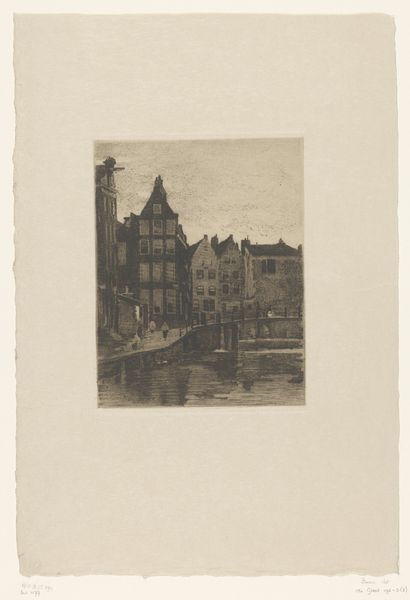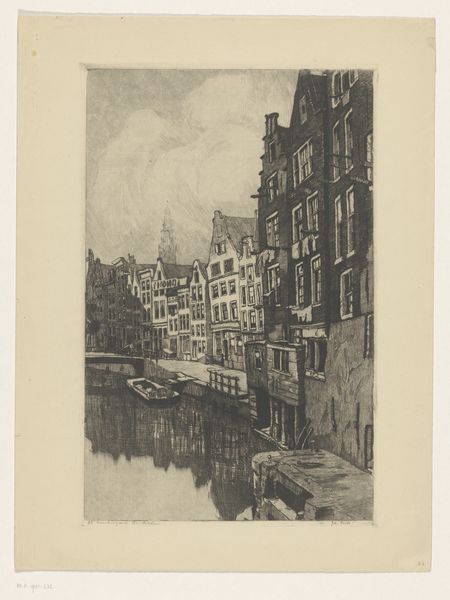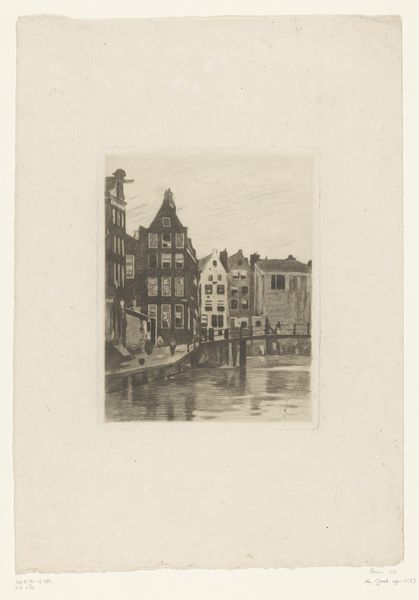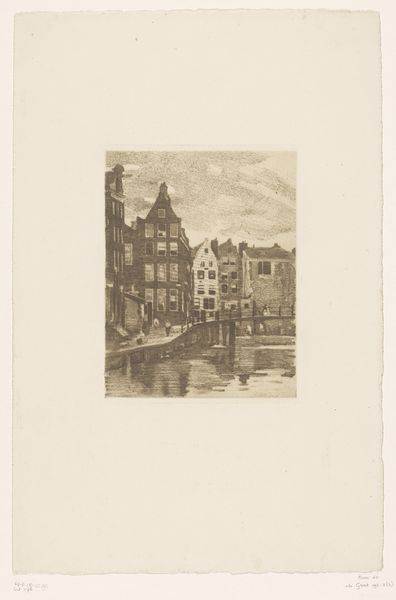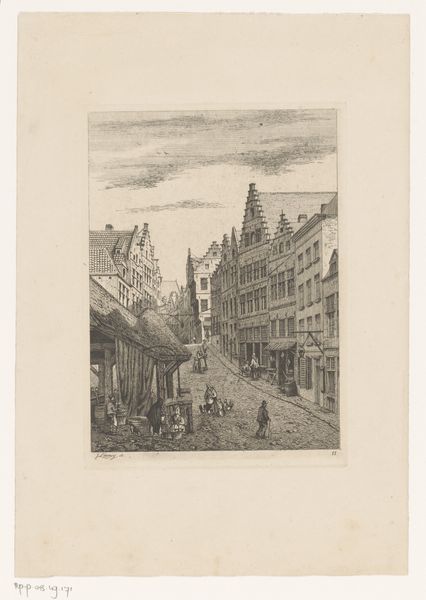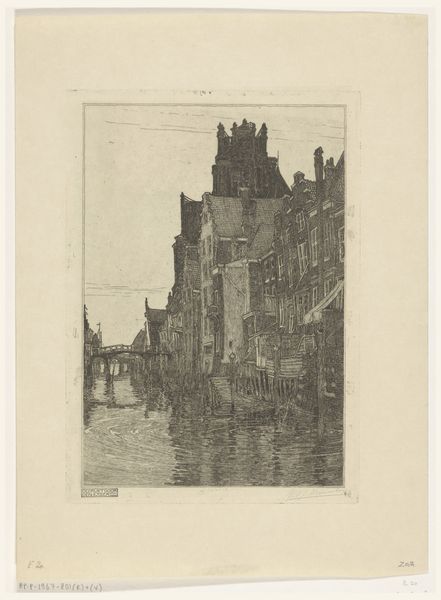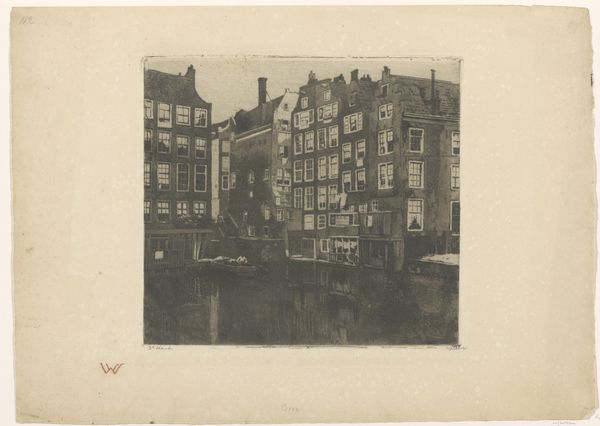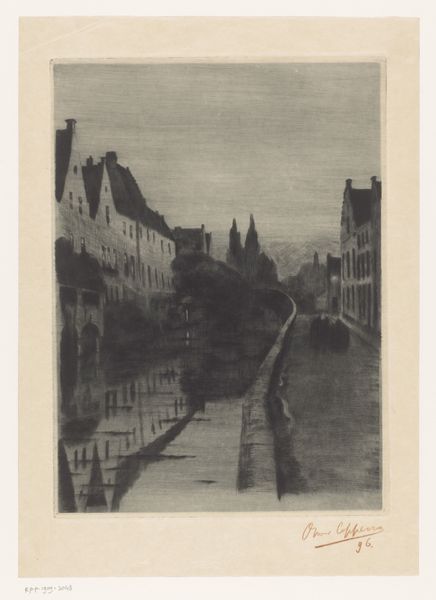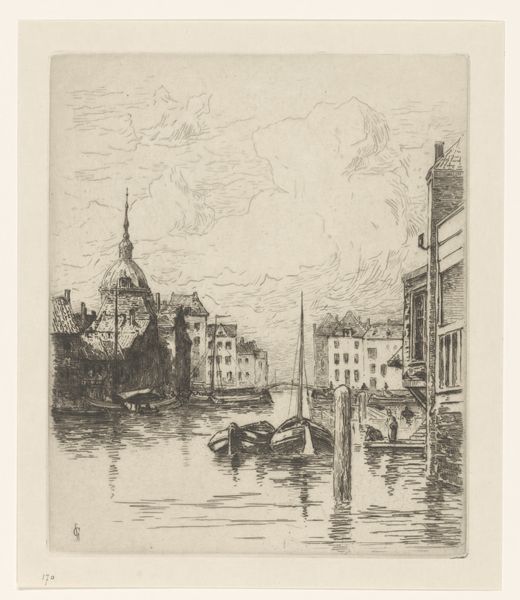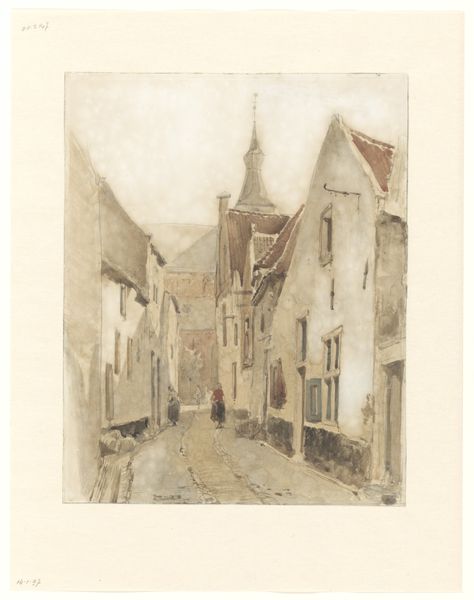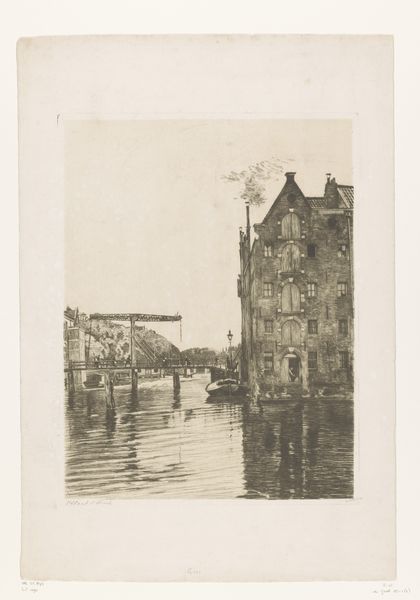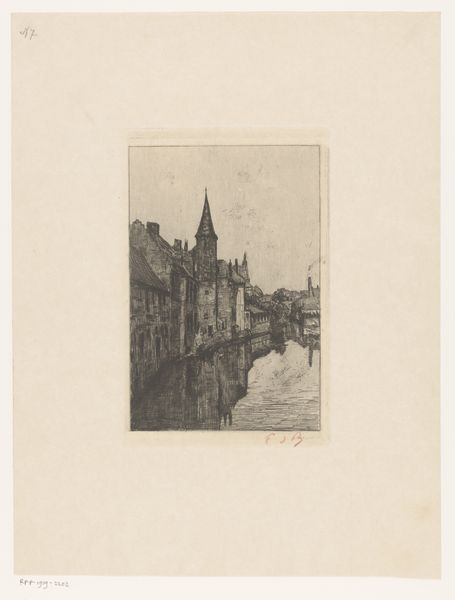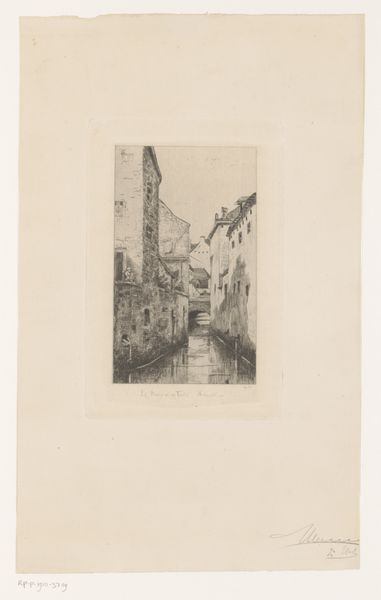
drawing, print, etching, paper, ink
#
drawing
# print
#
etching
#
old engraving style
#
paper
#
ink
#
cityscape
#
realism
Dimensions: height 230 mm, width 168 mm
Copyright: Rijks Museum: Open Domain
Editor: So, this is "Gezicht op een straat in Ulm," a cityscape by Eugen Siegler, created sometime between 1904 and 1949. It's an etching, with ink on paper, done in a very realistic style. I'm really drawn to the detail; the textures feel so tangible. What do you see in this piece? Curator: The density of those textures, as you noted, creates a sense of the past clinging to the present. Notice how the artist meticulously renders the aged wood and stone. The high contrast creates deep shadows, imbuing the scene with a weightiness – almost a melancholic air. What cultural memories might this cityscape evoke? Editor: I'm not sure, but the age of the buildings gives a sense of history, maybe even hardship with the crowded street and simple construction, but can the imagery tell us more? Curator: Exactly! Think about what cityscapes traditionally represented. Historically, cityscapes can stand as testaments to civic pride, order, and progress, or even to urban decay, depending on the artist’s choices. The dense, almost claustrophobic feel here deviates from idealized visions. The artist's focus on aged materials serves as an interesting perspective on urban evolution. What do these persistent features suggest about the identity of Ulm itself? Editor: That's fascinating, it makes me consider the symbolic importance of everyday scenes like this. It seems that Siegler wasn't just capturing a street, but the cultural spirit embedded in the very architecture of the city. Curator: Precisely! It encourages a meditation on continuity and change and reminds us that even mundane scenes are loaded with cultural and psychological meaning. Editor: Thanks, that was a totally new perspective. I will keep it in mind to look closer at details that are present everywhere, thanks! Curator: My pleasure; always let curiosity guide your study!
Comments
No comments
Be the first to comment and join the conversation on the ultimate creative platform.
